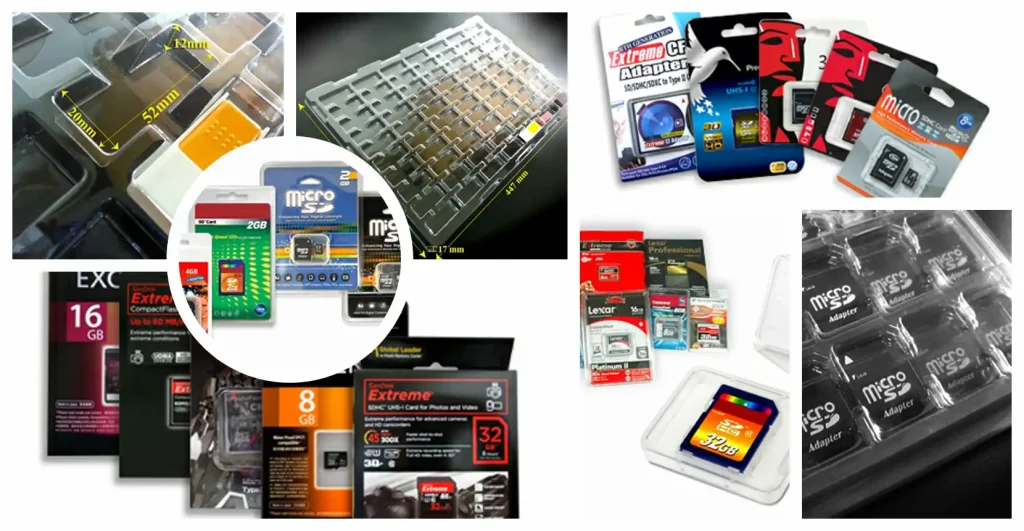Electronic products are composed of many electronic components. The characteristic of electronic components is that they need to prevent damage to the products caused by static electricity during the production process, storage process and transportation process, so their packaging, storage, transfer pallets, etc. Devices need to have conductive or antistatic surface properties. Our products are mainly made of PP, PS, and PET as base materials. We use the coating production line imported from abroad by Prix and its unique coating technology to treat the surface of the base material to achieve conductive and antistatic effects (determined by the resistance value range distinction), and finally made into a sheet roll suitable for blister molding and with good heat sealability, which is the best choice for producing CPU chip storage transfer trays.

Antistatic polypropylene (PP) plastic sheets are specialized materials designed to control and mitigate the buildup of static electricity on their surfaces. Polypropylene itself is a thermoplastic polymer widely used in various industries for its excellent chemical resistance, durability, and lightweight properties. The incorporation of antistatic properties into PP sheets makes them particularly suitable for applications where static electricity can pose a risk, such as in the electronics, packaging, and manufacturing industries.
1. Antistatic Properties: Antistatic PP sheets are formulated with additives that dissipate or neutralize static charges, preventing the accumulation of static electricity on the material’s surface.
This feature is crucial in environments where static electricity can damage sensitive electronic components or interfere with industrial processes.
2. Chemical Resistance: Like regular polypropylene, antistatic PP sheets offer excellent resistance to a wide range of chemicals, acids, and bases.
This chemical resistance makes them suitable for use in environments where exposure to corrosive substances is a concern.
3. Durability and Strength: PP is known for its durability and strength, and antistatic PP sheets maintain these characteristics.
They can withstand mechanical stress and harsh environmental conditions, ensuring a long service life.
4. Lightweight: Antistatic PP sheets are lightweight, which makes them easy to handle and ideal for applications where weight is a consideration.
Antistatic PS (Polystyrene) plastic sheets are specialized materials designed to address the issue of static electricity in various applications. Polystyrene is a versatile and widely used thermoplastic polymer known for its clarity, rigidity, and ease of processing. When infused with antistatic properties, PS plastic sheets become particularly useful in environments where the build-up and discharge of static electricity can pose risks to sensitive electronic components, equipment, or products.
1. Composition: Antistatic PS plastic sheets are typically formulated by incorporating additives that enhance their electrical conductivity. Common additives include carbon or metallic particles, which help dissipate static charges and prevent the accumulation of electrical potential on the surface of the material.
2. Antistatic Properties: The primary function of these sheets is to control static electricity. They provide a path for the safe discharge of accumulated static charges, reducing the likelihood of damage to electronic devices and ensuring a controlled environment for sensitive processes.
3. Applications: Antistatic PS plastic sheets find applications in a variety of industries where static electricity can be problematic. Some common uses include protective packaging for electronic components, trays for handling and transporting electronic parts, and cleanroom environments where static-sensitive devices are manufactured or assembled.
4. Packaging Solutions: The antistatic properties of these sheets make them suitable for packaging materials that come into contact with electronic components. This helps prevent electrostatic discharge (ESD) events that could potentially damage or degrade sensitive devices during handling, shipping, or storage.
Antistatic PET (Polyethylene Terephthalate) plastic sheets are a specialized type of material designed to minimize or eliminate the buildup of static electricity on their surfaces. PET is a transparent, strong, and lightweight polymer widely used in various applications, and when enhanced with antistatic properties, it becomes particularly useful in environments where static electricity can be a concern.
1. Material Composition:
PET Base: PET is a thermoplastic polymer known for its clarity, strength, and excellent dimensional stability. It is commonly used in packaging, electronics, and other industries.
Antistatic Additives: Antistatic PET sheets incorporate additives that enhance the material’s ability to dissipate or neutralize static electricity. Common additives include conductive agents or coatings.
2. Antistatic Properties
Static Dissipation: Antistatic PET sheets are engineered to dissipate static charges, reducing the risk of electrostatic discharge (ESD). This property is crucial in environments where the accumulation of static electricity could damage sensitive electronic components.
3. Applications
Electronics Packaging: Antistatic PET sheets are often used in the packaging of electronic components to protect them from electrostatic discharge during handling and transportation.
Cleanroom Environments: Industries such as semiconductor manufacturing and pharmaceuticals utilize antistatic PET sheets to maintain a controlled environment free from static interference.
Graphic Arts: These sheets are also employed in the printing and graphic arts industry to prevent static-related issues during printing and processing.
4. Compliance and Standards
ESD Standards: Antistatic PET plastic sheets may comply with industry standards related to electrostatic discharge, ensuring their effectiveness in protecting sensitive electronic equipment.